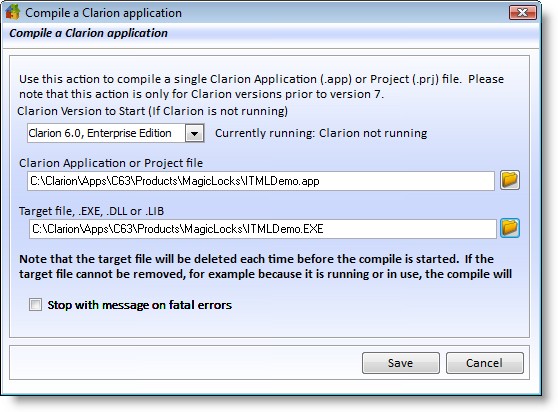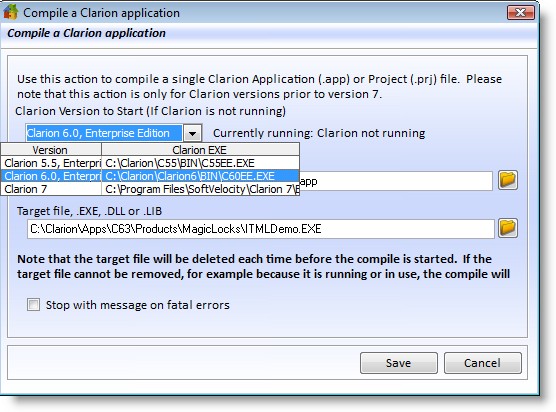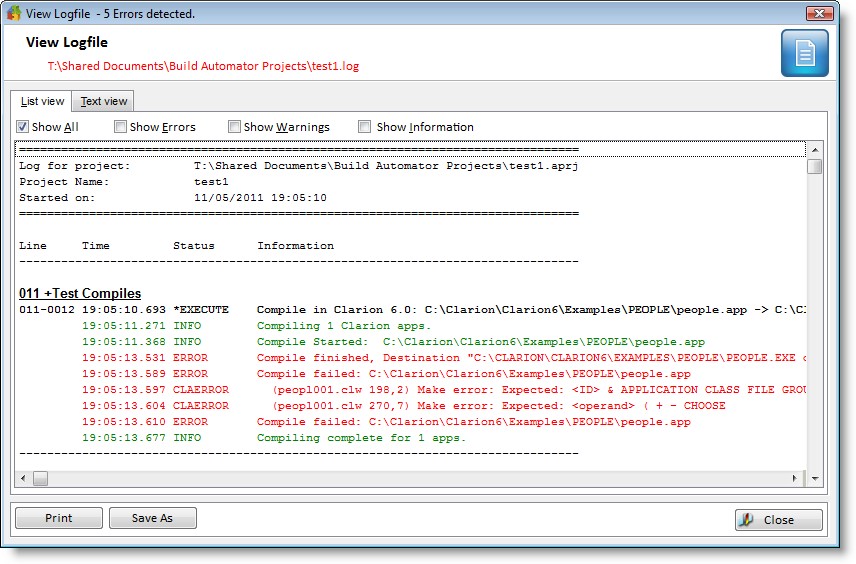
|
Build Automator Documentation
Compile Clarion |
|
Previous
Top
Next
|
|
|
This action compiles a selected Clarion application file (*.app) or a selected Clarion project file (*.prj). Note that this action is only for Clarion 6 and older. For Clarion 7, Clarion 8 and Clarion.NET use the Call MS Build action. There are some limitations in this action. Even though you can specify which Clarion version to run the action cannot guarantee that the app will compile in the correct version IF you have multiple versions of Clarion running. This can cause complete confusion because the DDE server in each version has the same name and that DDE server has to be called to compile the application. So the safest way is to make sure that either Clarion is not running or only the correct version of Clarion is running before you execute this action.

Properties |
Explanation |
Clarion version... |
Select the Clarion version to start if it isn't already started. |
Application or Project |
Select the .app or .prj file to compile. |
Target file |
You must select the target file that the compilation will create. This must match what you have set in your Clarion app/project as the "Target File" |
Stop with message... |
Stop the script on fatal errors allowing you to determine if you want to continue or not. |
First you need to select the correct Clarion version to start. This is only used if no Clarion version is running.

Select the appropriate version from the dropdown. It will show you both the version information and the location of the Clarion executable.
You must select both the application or project file to compile and also the destination file. If the destination is not specified, the action will not run. Before the compile starts, the destination file is removed. The creation of the destination file is the indication that the compile process was successful.
If you want the compile process to stop on a fatal error during the Clarion compile process, then check the "Stop with a message on fatal errors" This will allow you to terminate the execution of the script.
Starting in version 1.5 you now get the same details in the Build Automator log as you would get in the Clarion Compiler window. This makes it possible for you to look at the Build Automator log and see exactly where errors may have occurred during the compiling process. See example below of a compile that caused 4 errors during compiling.

See also: